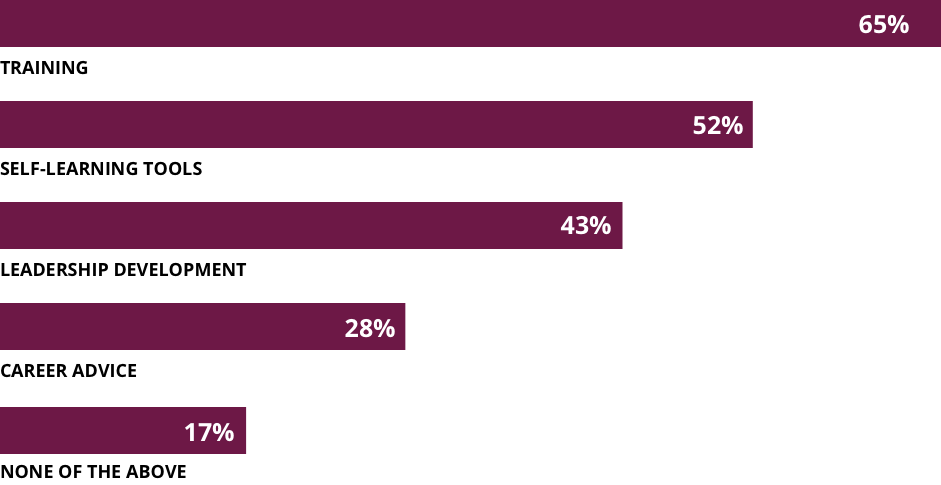Report
The missing ingredient in successful technology implementations in Greater Seattle: People

An Eagle Hill Consulting survey reveals that only 38 percent of the Seattle workforce thinks that new technology has had a positive impact on their organizations. This finding has significant repercussions for institutions across industries that seek to use data, analytics and productivity tools to enhance customer propositions and competitiveness.
Digital disruption is the new normal for information-based industries like healthcare, financial services and media and entertainment. It is a constant state of innovation and renewal that is critical to remaining competitive. Facing countless start-ups and niche competitors, as well as significant legacy infrastructure, traditional players are making big technology bets just to keep up—whether enterprise-wide, in new technologies, or through agile methodologies. The result? A big miss on ROI.
This miss comes down to one crucial ingredient: people. Too often the justification for major technology investments is based on anticipated benefits such as new client business or productivity gains. This focus does not account for the critical role of the workforce in not just adopting, but in optimizing the use of the new technology in day-to-day business practices. This is where dilution of returns occurs. And it’s why so many technology projects fail to deliver on time, on cost, or at all.
With new technology so central to information-based organizations, it is vital to engage the people using it in the selection, development and testing stages of technology innovation. It is also critical to engage them throughout the implementation and after where the real benefits of technology are felt by employees.
The Eagle Hill Technology in the Workplace Survey of Seattle employees shows a gap between companies’ perceived value from their technology investments and how their employees experience them. Companies are routinely not maximizing ROI from technology change. Technology alone is not a silver bullet. Its impact comes from how it supports business models—and from what people do with technology. This is why maximizing technology return requires that new technology solutions work for and are understood by the employees using them.
Employees see a gap between investment and impact
Employees intuitively understand that tech advances offer exciting possibilities. Yet as they see it, technology investments do not necessarily improve performance (Figure 1). While 44 percent say that their employer introduced a new technology in the last two years, only 29 percent of Seattle workers say their company invests in the right technology to support them. Just 38 percent think technology change has had a positive impact on their organization.
Only 29 percent of Seattle workers say their company invests in the right technology to support them.
Figure 1: A minority of Seattle employees say technology at work is improving how they perform on the job.
Question: At work, technology (automation, AI, robotics) has improved the following: Select all that apply.

Source: The Eagle Hill Consulting Federal Workplace Culture Survey 2020.
Employees find that support is in short supply
The survey suggests that Seattle employees are not confident about technology change because they are not getting necessary support from their employer. Nearly three-fourths of workers say they need more skills to adapt to advancing technology. Yet only 36 percent of Seattle workers report that their company gives them the right level of support to understand and benefit from new technology solutions. Training is the strongest area of support, while leadership development and career advice are less so.
Only 36 percent of Seattle workers percent of workers get the right level of support to benefit from new technology.
Figure 2: Seattle employees are not getting all the support they need to respond to technology change.
Question: In which of the following areas is your employer providing you with the right support to respond to the changing requirements of work?

Source: The Eagle Hill Consulting Federal Workplace Culture Survey 2020.
Employees are not asked for their input
The best way to give employees the right support while procuring, developing, and eventually deploying new technology is to find out what they need in the first place and how they would go about using it. Yet employers are not effectively communicating with employees about technology decisions, much less deployment strategy. Only 1 in 5 Seattle employees say that they are asked for their input. A troubling 14 percent are completely unaware of technology changes in their company.
Only 1 in 5 Seattle workers are asked to give input to technology change.
Getting the most from technology investments means recognizing the human factor in embracing and maximizing change. Start with these actions:

Ask employees what they need. Really! People are the lynchpin of all successful technology change. Yet most organizations either overlook the people factor entirely, or they make the wrong assumptions about it. It is critical to hear directly from employees how they can (or can’t) integrate a new technology into their day-to-day activities. To do this, leaders can engage a diverse group of employees in scenario-based planning. By getting feedback and engaging the broader organization in decisions, rather than working in isolation, companies can tap into the full potential of technology solutions.

Connect work today and tomorrow. Strategic workforce planning enables organizations to understand the impact of a new technology on the current and future workforce. Analyzing the proficiency and skills in the current workforce identifies gaps against future state demands for serving customers and meeting business goals. To address these gaps, organizations can pursue the following approaches:
- Building skills through upskilling.
- Buying skills through hiring or acquisitions.
- Borrowing skills by contracting with gig workers.
- Bridging skills through colleague redeployment or transitions out.

Build a culture of adoption. In the absence of a culture embracing customer centricity and a growth focus, no technology solution will deliver the anticipated ROI. Starting at the top, leaders must actively represent the culture and demonstrate its behaviors. From day one, employees must know what is expected of them in terms of performance and actions. Instilling customer experience and growth mindsets will lead to behaviors and habits that are accentuated by technology to drive business performance.

Get everyone disruption ready. Disruption is the status quo in today’s world. Successful companies will have business agility and develop strong “disruption muscles” across the workforce. Put simply, employees must become disruption ready. They must be nimble, adaptive and completely comfortable with change as an ever-present influence in their work life. Leaders can help build this muscle by communicating the strategic vision, setting expectations, acknowledging and rewarding resilience and soliciting feedback.
Technology change will continue to reshape business in ways we cannot imagine today—and faster than many might assume. What’s the best way to take full advantage of the opportunities ahead to make technology work for the business? Make technology work for people.
Methodology
The Eagle Hill Consulting Technology in the Workplace Survey 2020 was conducted online by Ipsos in January 2020. The online survey included 549 respondents from a random sample of employees across the Greater Seattle area. The survey polled respondents on aspects of the impact of new technology (such as artificial intelligence, automation and robotics) on their current and future work environment.

